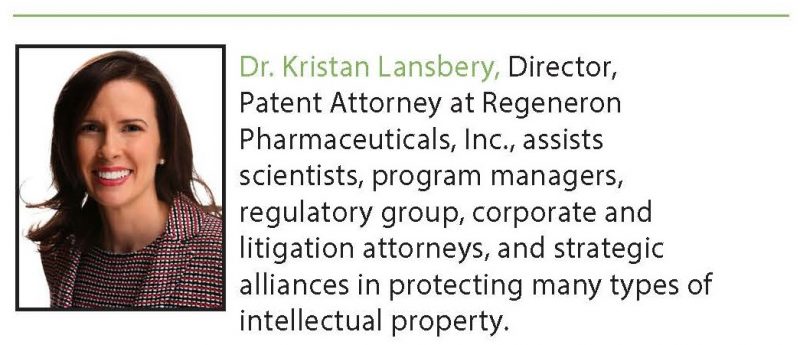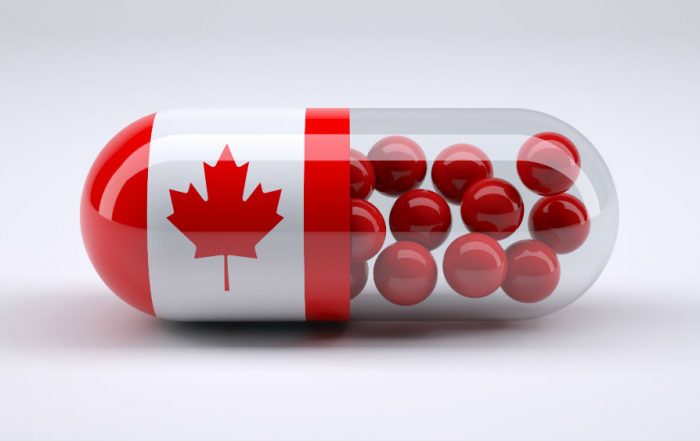
Protecting Trade Secrets in the Medical Product Approval Process
by Kristan Lansbery
Intellectual property (IP) practitioners working with company scientists are responsible for protecting company IP. But they cannot do it alone. Comprehensive vigilance across the company is required to protect trade secrets. Regulatory professionals are in a unique position to identify trade secrets because of their close interactions with the company scientists when drafting regulatory filings. This article focuses on the role that regulatory professionals can play in protecting trade secrets.1
A trade secret can be practically any information that is not generally known, is treated as a secret, and gives its owner an advantage over competitors who do not know it.2 Your IP colleagues almost certainly do not know about or track all of the company’s trade secrets for many reasons. For example, a biotech company’s trade secrets can include detailed manufacturing steps that are not individually patentable and too numerous to document, and the company scientists may not recognize them as being valuable or protectable. Regulatory professionals working with the company scientists can help their IP colleagues identify and protect trade secrets.
Identifying Trade Secrets
Certain questions will help you and your company think about what information is worth protecting as a trade secret. For example,
- How extensively is it known by internal colleagues?
- What measures are taken to protect it?
- How valuable is it?
- How much time, effort, and money were spent developing it?
- How hard and expensive would it be for competitors to achieve a similar result without it?
No specific answer is required to any question above, and other questions may be more appropriate in a given industry. If you are only going to ask one question, it could be: Would we want our main competitor to know? Even if the information is only of small value in isolation, if in combination with other secrets, it could create a significant improvement and be worthy of protection.
Examples of trade secrets that might be considered for incorporation into a regulatory filing:
- Manufacturing processes or techniques;
- Product formulas;
- Ingredients and recipes;
- Assays;
- Names of vendors and suppliers; or
- Unique combinations of generally known concepts.
If the information can be determined from the item to be sold, it will not be protectable as a trade secret after marketing approval. Even for products that are never approved, if the clinical trial work was done with NIH funding, the design and results from those trials will need to be disclosed, which hinders trade secret protection.3
Partners Can Also Be Competitors
The pharmaceutical and biotechnology fields rely on the dense interconnections of commercial partnerships, collaborations, joint ventures, and outsourcing agreements. It isn’t feasible to lock all proprietary information in a vault like the Coca-Cola formula. If detailed information about a program needs to be shared outside the company to move a business objective forward, regulatory submissions drafted as part of an approval process can end up being provided to a third party. With an established partner, such filings and other supporting documents may be shared as a routine matter. Therefore, it is worth taking time to identify company trade secrets as each regulatory submission is being drafted. When you solicit information from the scientists for the filing, that is your opportunity to ask them what information is proprietary and may be worthy of trade secret protection.
This information is necessary to implement the company’s other efforts to protect the trade secrets. Non-disclosure agreements or confidentiality agreements with third parties are very unlikely to list all the company’s trade secrets. They are more likely to include statements that any information marked or identified as “confidential” or “trade secret” at the time of disclosure to the third party must be respected and protected by that third party. Accordingly, marking trade secrets in a regulatory submission gives that third party the required notice, even when the trade secret information is not easily known or identifiable at the time the agreement is signed.
These efforts are especially important when platform technology may be shared. If the trade secret will remain in information that could be sent to a partner who makes similar products, that partner needs to be notified about what is your company’s trade secret and therefore not available for them for use with their own, unpartnered products. By protecting trade secrets, competitors are forced to solve problems without using your proprietary methods.
Freedom of Information
Even if there aren’t any third parties directly involved, what goes to a regulatory agency may not remain protected from competitors’ eyes. In the United States, the Freedom of Information Act (FOIA), 5 U.S.C. §552, provides that any person has a right to access federal agency records unless the information is protected from disclosure because it falls under one of the FOIA exemptions.4 Accordingly, information in filings for marketing approval will be disclosed to any citizen that files a request unless FDA or the applicant identifies the information requested as a trade secret or as confidential information.
However, trade secrets can be difficult to identify, especially in a Biologics License Application (BLA) where proprietary information can be pervasive throughout certain sub-modules of the filing or accidentally slip into other sub-modules amongst the many pages. FDA will make the fullest possible disclosure of regulatory submissions to the public, redacting trade secrets to encourage “frank internal policy deliberations.”5 They are not required to even notify an applicant of a FOIA request if the information to be disclosed “has not been designated by the [applicant] as exempt from disclosure. . . unless the agency has substantial reason to believe that disclosure of the information would result in competitive harm.”6
However, information that could result in competitive harm to your company may not be apparent to the FDA employee making the determination of whether you should be notified of the FOIA request. Because trade secrets sprinkled within the volume of pages of a regulatory filing are not necessarily easy to identify, it is critical that companies do that work for FDA up front. Without help from the applicant, FDA may not identify proprietary information and thereby may allow its release.
Managing Your Trade Secrets
If trade secrets are identified at the outset of the drafting process, they can be treated appropriately throughout the drafting and approval process. One option may be to leave the information out of the FDA application entirely. Alternatively, even if the secret may be important for FDA approval, it may not be as necessary for approval in another country. If so, the secret could be removed before filing outside of the United States. Just as there are different requirements for marketing approval in different countries, there are also different levels of protection for trade secrets in other countries. In certain countries, a footer designating trade secret information can be added to a page that contains sensitive information. Indiscriminate use of such markings, however, weakens the impact.
If you decide to keep trade secrets in the FDA filing, you can make them exempt from FOIA by identifying them in the filing and by being particular about where to put trade secrets within the filing. Proprietary information can be identified in writing either when you submit it to FDA or “within a reasonable time thereafter.”7 It is also worth considering where in the submission to place trade secrets. Some sections of the common technical document (CTD) are more likely to be released to a competitor under FOIA. Generally speaking, the more detailed and quantitative aspects of Module 3 are less likely to be released so that much of Module 3 will be kept confidential. There are exceptions, such as literature references (sub-module 3.3) and high-level characteristics about the approved product, like mechanism of action. In contrast, industry standardized techniques and clinical aspects of the product that evaluate safety and efficacy, mostly in Modules 4 and 5, will typically be disclosed.
The European Medicines Agency (EMA) published guidelines for which elements of a marketing authorization application it considers commercially confidential information (CCI), and therefore are not disclosable to competitors or the public.8 These EMA guidelines also set forth that certain sub-modules “Can Be Released” or require a “Case By Case Analysis.” These EMA guidelines are not binding on FDA, but they may be used as a starting point to estimate the likelihood that your information will be safeguarded by FDA and they give you a step ahead for a potentially related marketing authorization application. The definition of CCI at EMA, however, is not the same as FDA’s definition of a trade secret. Rather, FDA will decide if disclosure “could reasonably be expected to cause substantial competitive harm.” If so, FDA will solicit applicant input to decide whether and what to disclose to the FOIA requester. Similarly, if FDA finds your designation of trade secrets to be “obviously frivolous,” FDA can send notice that it will disclose the records regardless of your designation. In those cases, the information will be disclosed five working days after the applicant receives the notice from FDA unless a U.S. District Court orders the agency not to. More likely, there will be an opportunity to work with FDA toward a solution. Given the short turnaround times, having considered what and where your trade secrets are in the filing can be quite helpful should FDA disagree.
Correspondence with the agency during the approval process and documents drafted specifically after approval by the agency also warrant careful review. In documents with questions for the applicant from an agency, applicant’s otherwise confidential Module 3 manufacturing information, which typically includes some trade secrets, will often end up being repeated in the agency’s question. It is again up to the applicant to protect their trade secrets despite having located them in an otherwise confidential section of the filing.
FDA will also publish an Action Package upon approval of a new drug application (NDA) or BLA.9 An “Action Package” includes documents generated by FDA related to review of the application, summary documents with conclusions from all reviewing disciplines about the drug that note any critical issues or disagreements between the applicant and the review team, and more. Specifically excluded from disclosure in the Action Package are trade secret and confidential commercial or financial information.10 FDA further publishes a Summary Basis of Regulatory Action on its website within 48 hours after the date of approval, except where redaction is required.11 EMA has a similar but more extensive disclosure process after product approval. Advance knowledge of your confidential information and its location within your filing is key to efficiently confirming that an agency doesn’t disclose it.
Conclusion
Although there are no fees associated with registering trade secrets, they are not cheap to protect. The resources and energy required to identify and actively maintain trade secrets involve the entire company. Because regulatory filings must be detailed and can be made public through the agencies where they are submitted, regulatory professionals are an important ally for protecting this valuable asset.
- This article is intended solely for general information purposes and should not be taken as legal advice. The views, thoughts, and opinions expressed in the text belong solely to the author.
- See Uniform Trade Secret Act §1 (1985) for a full definition.
- Sara Reardon, US toughens rules for clinical-trial transparency, Nature News, Springer Nature, Sep 16, 2016.
- See 21 C.F.R. §20.61(c)
- 21 C.F.R. §20.20(a)
- See 21 C.F.R. §20.61(f) (emphasis added)
- 21 C.F.R. §20.61(d)
- See pages 31-36 of http://www.ema.europa.eu/docs/en_GB/document_library/Other/2012/03/WC500124536.pdf
- See 21 U.S.C. §355(l)(2)
- See 21 U.S.C. §355(l)(2)(E)
- Id.
Update Magazine
March/April 2018









